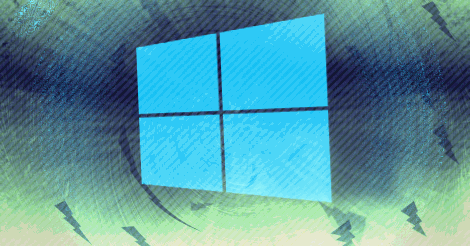Disk Activity Going Crazy in Windows 10
What you can do to solve a problem with high disk use in Windows 10

Edited: 2021-03-22 21:23

Some people are experiencing high disk use problems in Windows 10. The problems are not necessarily limited to Windows 10, and can also happen in other Windows versions, such as Windows 8.1, or even Windows 7.
You may notice the problem when hearing a "laud" noise from your hard disk, as if the disk is working intensely, and it never really seem to finish. The sound is sometimes more noticeable on a laptop, because the case on large desktop computers typically isolates somewhat against noise from from the different components.
Besides the noise just being generally distracting and annoying, high disk use can also slow down your system, especially if you do not have much RAM installed.
If you pay attention to your system monitor, then you may be able to tell when exactly your system runs out of memory. I.e. having multiple browser tabs open can use a lot of memory, and music streaming services, such as Spotify, also take a good chunk of memory. A computer with just 4GB of RAM may be enough for simple office use, but depending on which apps you have open, it could quickly run out of memory. The symptoms can be anything from tiny slowdowns, to freezing up for several seconds.
The problem with high disk use is much more noticeable when you are using mechanical hard drives. Buying an SSD hard drive can sometimes solve the problem. Windows 10 is apparently very inefficient with mechanical drives, causing major slowdowns, especially on computers with less than optimal RAM. However, even with sufficient RAM, it is still very noticeable; so buying an SSD is highly recommended.
Causes of high disk use
There are actually a number of causes for high disk use in Windows, and on some systems there might even be multiple active ones, creating a type of "cocktail affect" which just makes the problem even worse, and harder to track down.
- Lack of Physical memory. If you run out of RAM, the system is going to use the swap file a lot more, and this causes high disk activity, and unnecessary wear and tear on your hard disk. It also tends to slow down your system.
- File hosting services, such as DropBox, might be trying to sync files, or check for changes. Also, if you both run Windows and Linux, problems with file permissions could possibly cause continuous disk activity.
- Windows Search is a service running in the background, which is known to cause high disk activity. The service is needed to index files for search, so if you are not using search, it should be fine to simply disable this.
- SuperFetch is a service intended to optimize applications launch time; however, it is also known to cause high disk use. Besides, launch time is often not bad enough to really mean anything to the user. So, if you do not care about how fast apps are launching, it should also be safe to disable this.
- Windows Update sometimes causes high disk use while installing updates, and even for a short while after having installed the updates.
- P2P in windows update may sometimes cause disk activity, and even steal your internet bandwidth. This feature allows Microsoft to use your bandwidth to distribute updates to other computers on the internet via P2P. It is recommended you disable this.
- Windows defender can cause high disk use when updating, and sometimes while performing background scans.
- AppXSVC is a service for Windows app store, and is known to cause high disk use.
- Microsoft Compatibility Telemetry sometimes causes high disk use. The service is related to Microsoft's collection of data.
It should be noted that a little disk activity is normal, and should not effect performance in any way.
If the activity often goes up for no apparent reason, try shutting down any non-windows apps and services, to narrow down the possible sources for the activity. You can run Resource Monitor from the performance tab in Task Manager to monitor disk activity and CPU use.
P2P in Windows Update
The P2P feature in Windows Update can easily be disabled, but it is sadly turned on by default, which means that Windows might sometime use your bandwidth. People with slow DSL connections, or who are sharing their connection could in theory be greatly affected by these P2P uploads.
To disable P2P do the following:
- Open Windows Update
- Go to Advanced options
- Go to Choose how updates are delivered
Then make a decision on how you want your updates delivered. The PCs on my own local network option may help speed up the update process, without affecting your upload speed.
Disabling Windows Services
Disabling Windows services, such as SuperFetch and Windows Search, may sometimes be desirable. This is mostly relevant for people using mechanical hard drives, as these services often seem to slow down computers considerably, with little benefit.
Note. Buying an SSD drive may greatly reduce problems with high disk use caused by Windows services.
Windows Services can be disabled in: Control Panel -> System and Security -> Administrative Tools -> Component Services
Alternatively, you can also find Component Services simply by searching for it in Windows Search. This will not work if you previously disabled the search service.
Disabling Telemetry can be done by disabling the Diagnostics Tracking Service.

Tell us what you think: